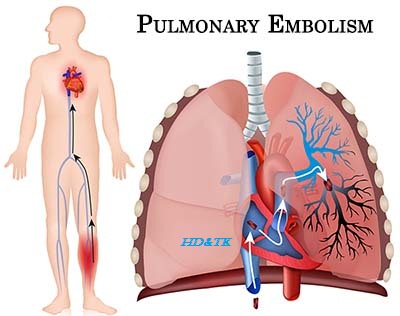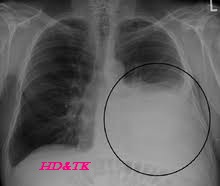Homeostasis
“Homeostatic”
Mechanisms of the Major Functional Systems
Homeostasis
The term homeostasis
is used by physiologists to mean maintenance of nearly constant
conditions in the internal environment. Essentially all organs and tissues
of the body perform functions that help maintain these constant conditions. For
instance, the lungs provide oxygen to the extracellular fluid to replenish the oxygen
used by the cells, the kidneys maintain constant ion concentrations, and the gastrointestinal
system provides nutrients.
Extracellular
Fluid Transport and Mixing System The Blood Circulatory System
Extracellular
fluid is transported through all part of the body in two stages. The first
stage is movement of blood through the body in the blood vessels, and the
second is movement of fluid between the blood capillaries and the intercellular
spaces between the tissue cells.
As blood passes
through the blood capillaries, continual exchange of extracellular fluid also
occurs between the plasma portion of the blood and the interstitial fluid that
fills the intercellular spaces. The walls of the capillaries are permeable to
most molecules in the plasma of the blood, with the exception of the large
plasma protein molecules. Therefore, large amounts of fluid and its dissolved
constituents diffuse back and forth between the blood and the tissue spaces.
This process of diffusion is caused by kinetic motion of the molecules in both
the plasma and the interstitial fluid. This is the fluid and dissolved
molecules are continually moving and bouncing in all directions within the
plasma and the fluid in the intercellular spaces, and also through the
capillary pores.
Origin
of Nutrients in the Extracellular Fluid
Respiratory
System
The blood passes
through the body, it also flows through the lungs. The blood picks up oxygen in
the alveoli, thus acquiring the oxygen needed by the cells. The membrane
between the alveoli and the lumen of the pulmonary capillaries, the alveolar
membrane, is only 0.4 to 2.0 micrometers thick and oxy diffuses by molecular
motion through the pores of this membrane into the blood in the same manner
that water and ions diffuse through walls of the tissue capillaries.
Gastrointestinal
Tract
A large portion
of the blood pumped by the heart also passes through the walls of the
gastrointestinal tract. Here different dissolved nutrient including
carbohydrates, fatty acids and amino acids are absorbed from the ingested food
into the extracellular fluid of the blood.
Liver and other
Organs That Perform Primarily Metabolic Functions
Not all
substances absorbed from the gastrointestinal tract can be used in their
absorbed form by the cells. The liver changes the chemical compositions of many
of these substances to more usable forms, and other tissues of the body such as
fat cells, gastrointestinal mucosa, kidneys, and endocrine glands help modify
the absorbed substances or store them until they are needed.
Musculoskeletal
System
The
musculoskeletal system also provides motility for protection against adverse
surroundings, without which the entire body, along with its homeostatic mechanisms,
could be destroyed instantaneously.
Removal
of Metabolic End Products
Removal of
Carbon Dioxide by the Lungs
At the same time
that blood picks up oxygen in the lungs, carbon dioxide is released from
the blood into the lung alveoli; the respiratory movement of air into and out
of the lungs carries the carbon dioxide to the atmosphere. Carbon dioxide is
the most abundant of all the end products of metabolism.
Kidneys
Passage of the
blood through the kidneys removes from the plasma most of the other substances besides
carbon dioxide that are not needed by the cells. These substances include
different end products of cellular metabolism, such as urea and uric acid; they
also include excesses of ions and water from the food that might have
accumulated in the extracellular fluid.
The kidneys
perform their function by first filtering large quantities of plasma through
the glomeruli into the tubules and then reabsorbing into the blood those substances
needed by the body, such as glucose, amino acids, appropriate amounts of water,
and many of the ions. Most of the other substances that are not needed by the
body, especially the metabolic end products such as urea, are reabsorbed poorly
and pass through the renal tubules into the urine.
Regulation
of Body Functions
Nervous System
The nervous
system is composed of three major parts: the sensory input portion, the central
nervous system (or integrative portion), and the motor output portion. Sensory
receptors detect the state of the body or the state of the surroundings. For
instance, receptors in the skin apprise one whenever an object touches the skin
at any point. The eyes are sensory organs that give one a visual image of the
surrounding area. The ears also are sensory organs. The central nervous system
is composed of the brain and spinal cord. The brain can store information,
generate thoughts, create ambition, and determine reactions that the body
performs in response to the sensations. Appropriate signals are then
transmitted through the motor output portion of the nervous system to carry out
one’s desires.
A large segment
of the nervous system is called the autonomic system. It operates at a
subconscious level and controls many functions of the internal organs, including
the level of pumping activity by the heart, movements of the gastrointestinal
tract, and secretion by many of the body’s glands.
Hormonal System
of Regulation
Located in the
body are eight major endocrine glands that secrete chemical substances called
hormones. Hormones are transported in the extracellular fluid to all parts of
the body to help regulate cellular function. For instance, thyroid hormone
increases the rates of most chemical reactions in all cells, thus helping to
set the tempo of bodily activity. Insulin controls glucose metabolism;
adrenocortical hormones control sodium ion, potassium ion, and protein
metabolism; and parathyroid hormone controls bone calcium and phosphate. Thus,
the hormones are a system of regulation that complements the nervous system.
The nervous system regulates mainly muscular and secretory activities of the
body, whereas the hormonal system regulates many metabolic functions.
Reproduction
Sometimes reproduction is not considered a
homeostatic function. It does, however, help maintain homeostasis by generating
new beings to take the place of those that are dying. This may sound like a
permissive usage of the term homeostasis, but it illustrates that, in the
final analysis, essentially all body structures are organized such that they
help maintain the automaticity and continuity of life.




Comments
Post a Comment